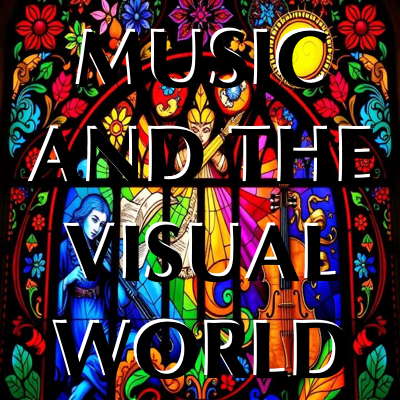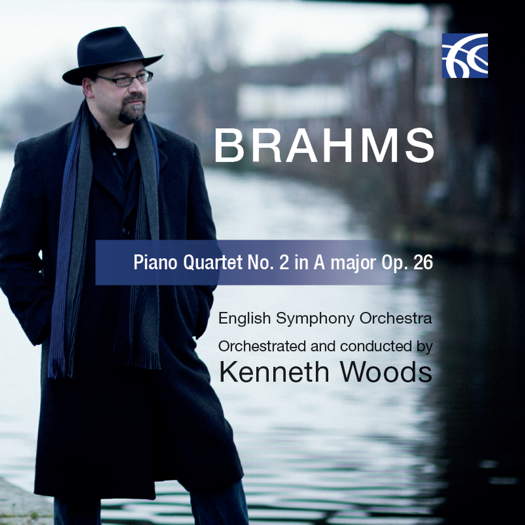Zoltán Kodály, Part II

by ANETT FODOR
Significant Premieres
After the great success of Psalmus Hungaricus, Kodály's career advanced in leaps and bounds. Premieres rapidly succeeded one another.
The first performance of Háry János, a folk opera in four acts, took place in the Royal Opera House, Budapest, on 16 October 1926. Kodály said of this piece:
He (Háry) is a sort figment of a collective Hungarian story-telling imagination. He never lies, he just spins a tale; he is a great poet. What he says never actually happened, but as he has lived through it in his imagination, for him, it has become truer than the truth!
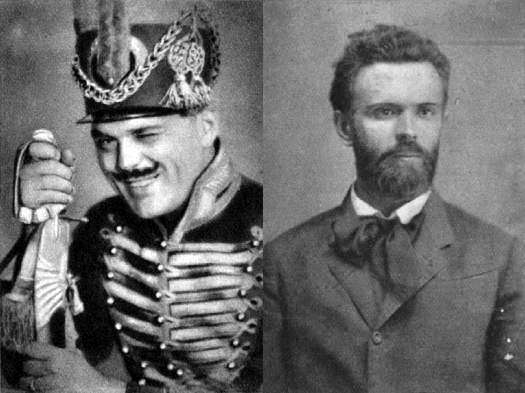
Imre Palló, left, the first ever Háry János, and Zoltán Kodály in the old Hungarian newspaper Tolnai Világlapja, 3 November 1926
Tales of Háry János abound throughout the Folk Songs Kodály collected. This is essentially a Hungarian legend and rather difficult for those who do not speak Hungarian to follow. The chances of the work being frequently performed abroad were therefore non-existent, so Kodály extracted a six-movement orchestral suite from the folk opera. This has proven to be very popular and has been performed frequently throughout the world since its creation in 1927.
Listen — Zoltán Kodály: Intermezzo (Háry János)
Magyar Állami Operaház Zenekara, Ferencsik János. © Hungaroton :
Four Italian Madrigals was inspired by a special occasion. The wedding of Arturo Toscanini's daughter, Wally, took place in Budapest in 1931. Kodály was Wally Toscanini's witness and gave this choral work to her as a wedding present. The first madrigal was interpreted in Kodály's apartment after the ceremony.
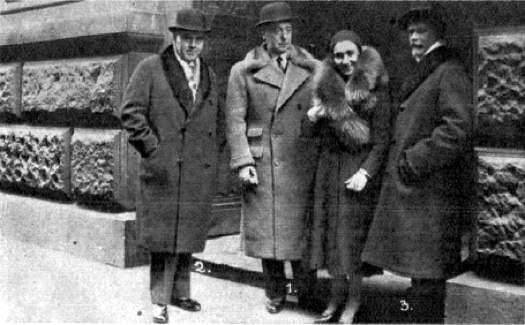
The newly married couple after the wedding in front of a registry office in Budapest. From left to right: one of the witnesses Zsolt Harsányi; the new husband (Count Emanuele Castelbarco Visconti Simonetta Pindemonte Rezzonico); the new wife, Wally Toscanini and the other witness, Zoltán Kodály. Photo from the contemporary newspaper Pesti Hírlap Képes Melléklete, February 1931
Also, during the 1930s, Dances of Marosszék, Mátra Pictures, The Spinning Room, Dances of Galánta, Jesus and the Traders, Te Deum and Peacock Variations were his next outstanding works.
Listen — Zoltán Kodály: Budavári Te Deum
Ferencsik, A Magyar Szimfonikus Zenekar, A Magyar Rádió és Televízió Ének
© Hungaroton :
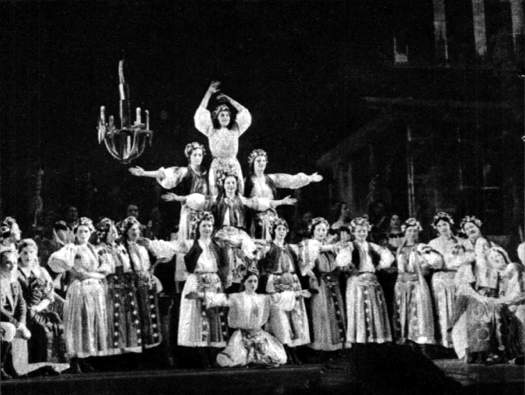
A scene from Kodály's Spinning Room - a one-act theatre piece. Photo from the old Hungarian newspaper Színházi Élet, 1-7 May 1932
During World War II, two significant masterpieces were first performed. Kodály had been commissioned by the Chicago Symphony Orchestra to write the Concerto for Orchestra to commemorate its fiftieth anniversary. This was premiered on 6 February 1941. The second was the Missa Brevis. During the siege of the Hungarian capital, Kodály and his wife hid in the cellars of the Budapest Opera House. The first performance took place in the cloakroom of this wonderful building on 11 February 1945, during that very siege.
In the 1950s, the Kálló Folk Dances for Mixed Choir and Orchestra was premiered at the debut performance of the State Folk Ensemble in the capital. The Hymn of Zrínyi, for solo baritone and choir, was very well received and also greatly impressed its Budapest audience.
Listen — Zoltán Kodály: The Hymn of Zrínyi
Miller Lajos, baritone, with the Hungarian Radio and Television Chorus
© Hungaroton :
In the last decade of Kodály's life, his Symphony in C (in memoriam Toscanini) was first performed, in the composer's presence, at the Lucerne Festival in 1961. Five years later his last completed work, Laudes Organi (Fantasia on a XIIth Century Sequence), which had been commissioned by the Atlanta Chapter of The American Guild of Organists, was first performed in Atlanta.
An Extraordinary Cultural Heritage
Kodály became interested in music education in 1925. He wrote many articles and essays on how to improve Hungarian musical education. His thoughts about renewing it were later gradually developed by his associates in the following decades. His popular slogan 'Let music belong to everyone' suggests that he wanted to make music available to all.
Kodály believed that music education has to be rooted in pure and original folk music and has to be started in nursery schools. He considered folk music to be a kind of 'musical mother tongue'. With the help of his old students, Kodály created new teaching methods and curricula in elementary and secondary schools. As he realised that schools were lacking in teaching materials, he composed several new solfeggio (Tonic Sol-Fa) works for children: 333 Elmentary Exercises in Sight-Singing, Bicinia Hungarica, Let Us Sing Correctly, Tricinia, Epigrams, as well as dozens of two-part exercises etc. The premiere of his choral works for children, which also had an educational purpose, took place in 1925.
The Kodály Method was first presented abroad at a conference of the International Society for Music Education (ISME), held in Vienna in 1958. Today it has been used throughout the world. The Kodály Method was inscribed as a UNESCO Intangible Cultural Heritage in 2016.
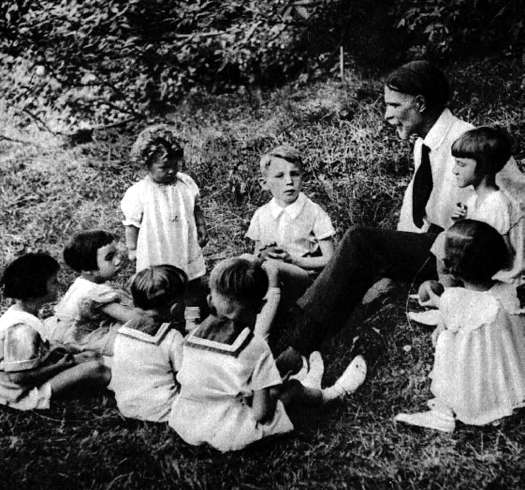
Kodály and his students' children, who were often called 'Kodály's grandchildren', at a garden party. Photo published in Színházi Élet Magazine, 23-29 June 1935
Titles and Awards
Kodály participated actively in both national and international cultural life.
Amongst many other positions that Zoltán Kodály held over the years, he had been President of the Hungarian Academy of Arts and Sciences from 1947-1950. He received an Honorary Doctorate from the University of Oxford in 1960, and the following year was elected President of the International Folk Music Committee in Quebec. Kodály was awarded the Herder Prize in 1965. This Prize is awarded annually to artists and scholars from the central and southeast countries of Europe, whose input has not only enriched cultural understanding between these regions, but also contributed to international peaceful relations.
His Apartment - Museum
Kodály and his beloved first wife lived in a four-room apartment in the sixth district of Budapest from 1924-1967. Its windows faced the magnificent Andrássy Street, an imposing tree-lined boulevard of very beautiful architecture in the centre of Budapest.
The apartment was comfortably pleasant, but practical rather than luxurious. It was furnished and decorated with souvenirs of Kodály's field trips and artistic activities. He had a wonderful carved wooden desk made in Kőrösfő, in what is Transylvania today. (The exact 'pair' partner of this desk belonged to Bartók before World War II.)
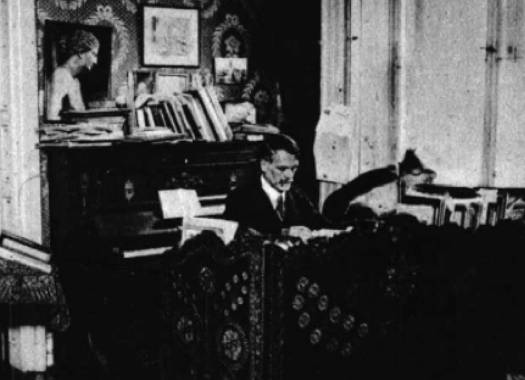
Kodály sitting behind his carved desk. Photo: Színházi Élet Magazine, 17-23 December 1933
Folk pottery, embroidery, statues, laurel wreaths, posters of foreign concerts and photos of his close family and professional colleagues decorated his home.
Amongst many others, Yehudi Menuhin, Aram Khachaturian, József Szigeti, Pablo Casals and Leopold Stokowski were entertained here.
The most fascinating room was the huge library. Kodály's precious and very impressive book collection consisted of six thousand volumes in Hungarian, Greek, Latin, English, French, Italian and German.
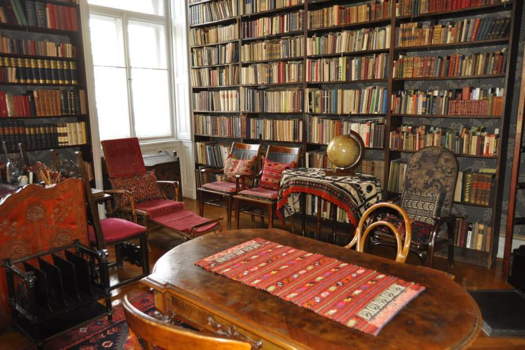
Kodály's library. Photo: www.kodaly.hu
Mrs Emma Kodály spent much time painstakingly collecting and carefully organising articles and other documents to do with her husband. After her death in 1958, this enthusiastic work was continued by Kodály's second wife, Mrs Sarolta Kodály, who was born Sarolta Péczely in 1940.
As the apartment had been preserved in excellent condition and was virtually intact, the Zoltán Kodály Memorial Museum was created inside it. It opened in 1990.
The Funeral
On 6 March 1967 Kodály died of a heart attack. Five days later he lay in state in the Hungarian Academy of Sciences, very much as Felix Mendelssohn had done in London 120 years previously.
A long queue wound in front of the building. Tens of thousands of appreciative people said their final goodbyes. Amongst the mourners were Hungarian ministers, foreign diplomats, well-renowned musicians and friends, including Ditta Pásztory (Mrs Bartók) and Bartók's son.
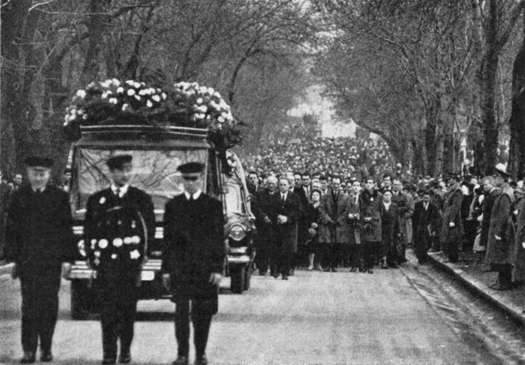
Kodály's funeral. Photo © 1967 György Gadányi
Fifty-two years after his death, Kodály is still highly respected in Hungary. It is acknowledged that without him, the history of Hungarian Music would be much the poorer.
Copyright © 16 October 2019
Anett Fodor,
Győr-Moson-Sopron, Hungary

FURTHER INFORMATION: ZOLTÁN KODÁLY
FURTHER INFORMATION: KODÁLY MEMORIAL MUSEUM & ARCHIVES


